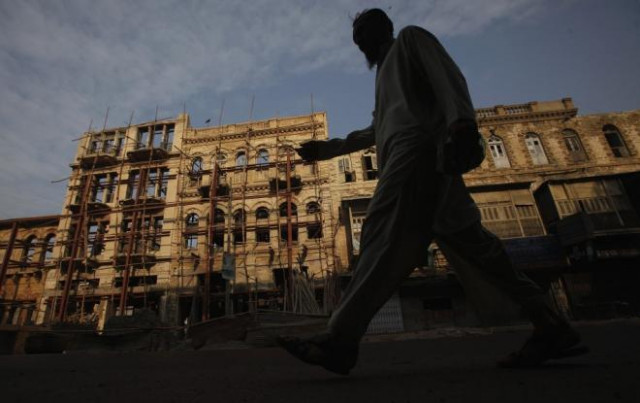Blurry images drift through the pungent air. Human forms seemingly cram space after space. As more and more individuals become exposed to our society’s chaos, struggles to maintain a representation and an identity become increasingly evident. It is in Karachi’s layers of chaos and lack of form where we find our reflections.
Situated in the fabric of daily life, architecture has the power to establish social divisions and identities through specialisation. Much like individuals, buildings have the tendency to take on the labels enforced on them by society, which in turn leads to the segregated traffic that accesses these various structures. These structures reveal the truth about the constraints of social life. I however wonder how these dysfunctional fabrics manage to facilitate a divide between you and me.
The initiation of modernity in the lives of many human beings has allowed various elements of exclusion to become invisible to those not looking for the ever-present line of segregation. Through this advancement, some boundaries between those encompassed by the constraints of urbanism and those refused recognition have lost their physical presence in the world of the suppressed. Modernity no longer needs any historical context to reinforce the enclosed spaces between the segregated. The imperceptible nature of contemporary barriers weakens between those who are currently using their influence to constantly alter the outcomes of history, and those who are the victims of these biased modifications.
Throughout history, the dehumanisation of architecture has instigated the essence of exclusion. Although exclusion may be considered necessary for an institute functioning on diminishing threats to a system that controls a massive group of individuals, isolation is not the effective method. By bringing about various lines of segregation in order to re-create spatial relationships, such as state border lines or common stereotypes, society is severing its connection with those it continuously tries to suppress into its ideal moulds. Since this connection is no longer sufficient enough to allow those with authority to control the outcomes, individuals that have been preyed on through exclusion may have become the threat that we face today.
Buildings that fuel a divide
Situated in the fabric of daily life, architecture has the power to establish social divisions and identities.



COMMENTS
Comments are moderated and generally will be posted if they are on-topic and not abusive.
For more information, please see our Comments FAQ